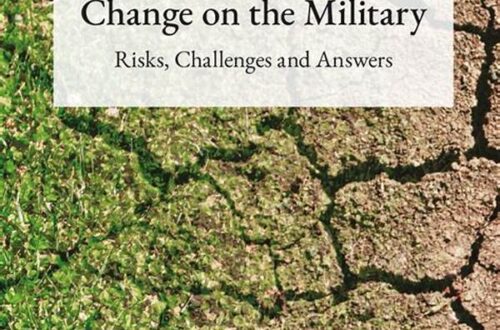The significance of robust border security and defense protocols cannot be overstated in our increasingly interconnected world. As nations grapple with a multitude of threats ranging from terrorism to unauthorized immigration, the necessity of a well-organized and effective border security strategy becomes paramount. It is essential for governments to establish protocols that are not only comprehensive but also flexible enough to adapt to evolving risks.
The Importance of Border Security and Defense Protocols
Border security and defense protocols play a vital role in safeguarding the sovereignty and national security of a country. These protocols comprise various measures designed to monitor and manage the movement of people, goods, and information across borders. They ensure that national security is maintained while facilitating legitimate trade and travel. More than just physical barriers, these protocols include the deployment of advanced technology such as surveillance systems, biometric identification, and unmanned aerial vehicles. Integrating these technologies aids in the early detection and prevention of potential threats. Moreover, an effective border security framework supports international cooperation by sharing intelligence with other nations, thus creating a global network of security and trust.
In a constantly changing geopolitical landscape, the relevance of border security and defense protocols extends beyond national safety. They contribute to global stability by managing cross-border crime, human trafficking, and the illicit drug trade. A nation’s ability to enforce its border policies effectively prevents not only the entry of unauthorized entities but also ensures the seamless flow of legal commerce. This delicate balance between security and economic growth underscores the necessity of continuously refining these protocols. An adaptive and responsive approach guarantees that national and international security needs are met without compromising economic interests.
Key Components of Border Security and Defense Protocols
1. Technological Integration: Border security and defense protocols involve the use of advanced technology to monitor and control border activities. This includes the use of drones, sensors, and electronic surveillance systems to detect and deter unauthorized entries.
2. International Collaboration: Effective border security depends on cooperation between nations. Sharing intelligence and resources strengthens collective security measures and enhances the capability to address common threats.
3. Legal Frameworks: The establishment of comprehensive legal regulations underpins border security and defense protocols. These laws ensure that security measures are executed within ethical and legal boundaries, respecting human rights.
4. Risk Assessment and Management: Routine assessments of potential threats are an integral part of maintaining robust border security. Protocols include procedures for identifying risks and developing mitigation strategies to handle diverse security challenges.
5. Training and Development: Personnel responsible for implementing border security and defense protocols undergo rigorous training. Continuous professional development is essential to ensure the effective execution of security measures and adaptability to new technologies.
Evolution of Border Security and Defense Protocols
The evolution of border security and defense protocols has been significantly influenced by technological advancements and shifting geopolitical dynamics. Historical reliance on physical barriers and manual inspection has given way to sophisticated, technology-driven measures. This transformation reflects the changing nature of global threats, which now include cyber-attacks, bioterrorism, and other non-traditional security challenges. The integration of digital technologies such as artificial intelligence, machine learning, and big data analytics provides border authorities with enhanced capabilities to predict, detect, and mitigate threats.
The progression of these protocols is marked by an increased emphasis on international collaboration. This collaborative approach involves sharing intelligence, resources, and best practices among nations to build a more resilient and cohesive global security framework. Multilateral agreements and partnerships between countries foster an environment of trust and cooperation, crucial for addressing transnational threats. This evolution underscores the need for continuous adaptation of border security strategies to effectively respond to an ever-evolving threat landscape.
Challenges in Implementing Border Security and Defense Protocols
Implementing effective border security and defense protocols requires overcoming numerous challenges that can impact their success. Firstly, securing sufficient funding is a perennial issue, as governments must allocate resources to cover the costs of technological upgrades, personnel training, and infrastructure development. Additionally, maintaining a balance between security and human rights poses ethical and legal dilemmas. Protocols must be enforced in a manner that respects individual freedoms while ensuring national safety.
Another significant challenge is the pace of technological advancement itself. While new technologies offer enhanced security capabilities, they also require constant updates and integration with existing systems, which can be both time-consuming and costly. Moreover, the ever-changing nature of threats necessitates continuous training for personnel to keep abreast of new security measures and tactics. Lastly, international cooperation, though essential, can be hindered by political and diplomatic tensions, affecting the seamless implementation of cross-border security initiatives.
The Role of Technology in Border Security and Defense Protocols
Technology plays a pivotal role in modern border security and defense protocols, providing tools to enhance surveillance, communication, and threat mitigation. Advanced technologies such as biometrics, unmanned aerial vehicles, and automated data processing systems revolutionize border management by increasing accuracy and efficiency. These tools allow for the rapid identification of potential threats, reducing the likelihood of human error and enabling swift responses to security breaches.
Moreover, technological advancements facilitate greater data collection and analysis, aiding in predictive threat assessments and proactive security measures. For example, facial recognition and fingerprint scanning systems can quickly verify identities, speeding up the process of legitimate border crossings while simultaneously identifying persons of interest. The utilization of technology also supports seamless information sharing among international security agencies, enhancing collaborative efforts to address transnational security challenges. Overall, technology is indispensable in ensuring that border security and defense protocols remain effective in a rapidly changing security environment.
International Cooperation in Border Security and Defense Protocols
International cooperation is a cornerstone of effective border security and defense protocols, essential for addressing the multifaceted nature of global security threats. Such cooperation involves not only bilateral and multilateral agreements but also active engagement in international organizations that focus on border security issues. Collaborative efforts enable countries to share critical intelligence, resources, and best practices, enhancing their collective ability to identify and thwart potential threats.
Through partnerships and joint training exercises, countries can harmonize their border security policies and practices, ensuring that they are well-equipped to confront emerging threats. Cooperative initiatives also aid in capacity building, allowing nations with less-developed security infrastructure to benefit from the expertise and technology of their more advanced counterparts. Furthermore, international cooperation facilitates a standardized approach to border management, reducing the risk of security lapses and fostering a unified global response to shared challenges. Thus, collaboration among nations is vital to maintaining effective border security and defense protocols in a complex and interdependent international landscape.
Conclusion
In conclusion, border security and defense protocols are critical components in maintaining national and international security. Their successful implementation relies on the integration of advanced technology, the establishment of comprehensive legal frameworks, and active international cooperation. While challenges such as funding shortages and the balance between security and human rights are significant, they can be effectively managed through strategic planning and collaboration. Adaptation to technological advancements and evolving threats is essential to ensure the continued efficacy of these protocols.
In an era where global security threats are increasingly complex and interconnected, nations must prioritize the development and refinement of border security and defense protocols. Such measures not only protect national sovereignty but also contribute to global stability by preventing the spread of transnational crime and terrorism. As these protocols continue to evolve, a collaborative approach involving shared intelligence, resources, and expertise will be crucial in addressing future security challenges. Through these efforts, countries can achieve a harmonious balance between security, economic growth, and the preservation of human rights.





